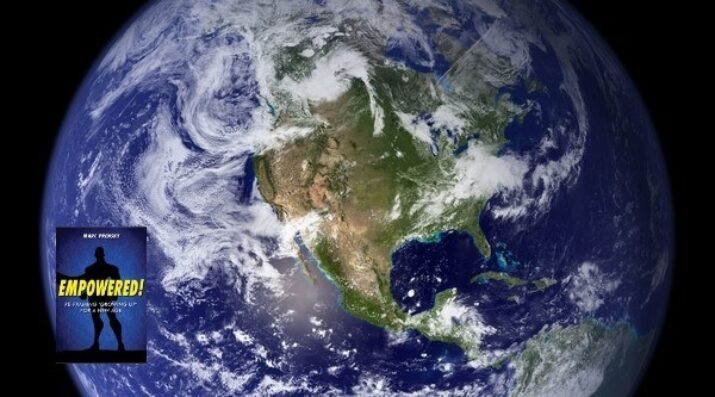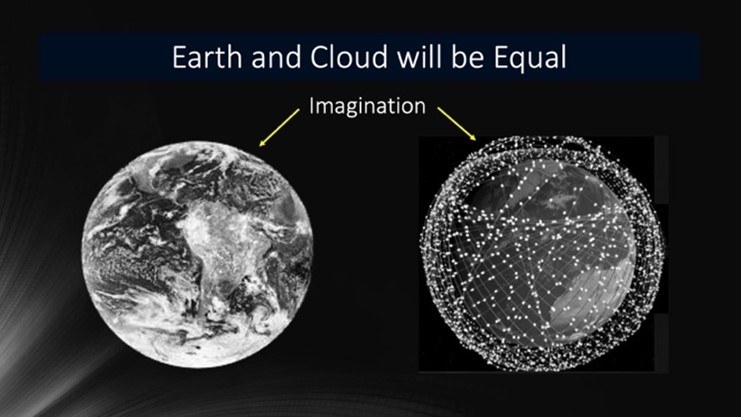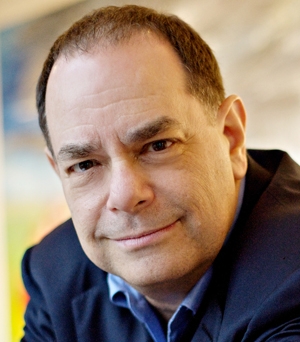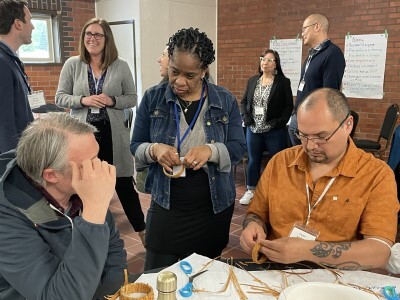Re-Framing Where Young People Will Live, Part 1
Topics

Next generation learning is all about everyone in the system—from students through teachers to policymakers—taking charge of their own learning, development, and work. That doesn’t happen by forcing change through mandates and compliance. It happens by creating the environment and the equity of opportunity for everyone in the system to do their best possible work.
EMPOWERED! Chapter 5
The cloud is becoming more and more important to how we live our lives and as real to young people as what they experience in the physical world on Earth.
Note: This article is a reprint of the first half of “Chapter 5: Re-Framing Where Young People Will Live” of the author’s book, EMPOWERED! Re-framing ‘Growing Up’ for a New Age. You may want to start with Chapter 1.
From “on Earth and in Their Imagination”
to “in their Imagination, on Earth & in the Cloud”
For most of human history there were only two worlds that young people—and all people—could live in. One, of course, was the actual world—Earth—where everybody did physically live. Most lived their Earth lives in, or close to, the place where they were born—although automobiles and planes changed this a bit, in the 20th century. Dramatically changing locations in the Earth world was—and often still is—seen as adventurous and risky. Humans—analogizing themselves to plants—talk about putting down roots—i.e., connections to a physical community. Some, like refugees, are forced to move by circumstances, but few uproot themselves willingly. Many of those who leave their place of birth long to return—and often do. People tend to be tied to certain places on Earth, often, like salmon, to the place where they began.
Many see this as good. But it was, and still today is, a big limitation—especially for people whose place of birth (over which they had no control) happens to be less fortunate.
The World of Imagination
Yet no matter where they were located physically, humans have always had, as well, a second world to live in—the world of the imagination. Every human could—and most probably did—live some of the time inside their own imagined world. For many, that imaginary world made the physical world more palatable. Some chose to live there more than others. Those people who lived mostly in the world of their imagination were often seen by others as odd—artists at best, dreamers, pollyannas, or “crazies” at worst. But it is worth remembering that every human-made thing on Earth started in someone’s imaginary world.
The Coming of the Cloud
Today we all—and especially young people—have a third world we can live in: “the Cloud.” Although its origins go back to the mid-20th century, the Cloud didn’t really exist as a place to live until the start of the 21st. Historically, the Cloud’s birth time will be seen, almost certainly (in Western counting terms) as the turn of the second millennium.
The Cloud world is still rapidly evolving, both physically and in people’s minds. Barring catastrophe, it will no doubt continue to evolve as long as there are humans. Humans will almost certainly create other places to live as well, such as on other planets. But it is already clear that the Cloud is a new, different—and sometimes better—place to live for some—especially for many of the people born after the year 2000.
Science fiction writers have long imagined the Cloud’s existence, and tried to describe it—the Oasis of Ready Player One is but one recent example. Once the Internet came into being people started building virtual worlds like Second Life online long before the current technology was fast enough for mass use. Now, with bandwidth growing rapidly, the technology is quickly catching up and the Cloud is burgeoning as an alternative place to exist.
What IS “the Cloud”?
The Cloud’s definition is continually evolving; it changes almost from day to day. Currently, the Cloud is, in its physical being, millions of connected computers—called servers—mainly located in huge data storage facilities all over the globe. Symbiotically, with each other and with humans, these machines collectively create a new kind of reality—in software, rather than in physical space, often visible, and visitable, on screens or through VR goggles.
People access this new Cloud world—i.e., the software—through connections to the server network—sometimes through wires and cables but increasingly through the air. Humans interact with the Cloud in many ways—through the Internet and its World Wide Web, and through other programs, apps, screens, earbuds, and virtual reality headsets (among others). It is a world that is found not on Earth (other than in the growing number of server farms), but exists only in software—i.e., on humans’ new symbiotic machine parts. But it is a world that is real—in a new way—and not just a metaphor.
Although it may evolve into something quite different, one can today picture the Cloud as an additional layer constantly receiving and beaming information, as in the artist’s depiction in the figure below on the right of Elon Musk’s Starlink satellites surrounding the planet.

Just like the Earth world, the Cloud is continually being fed by human investment and imagination.
How Should We “Frame” the Cloud?
The Cloud world is now extremely complex and deep and is daily becoming more so. Because it has become so much more complicated over its short existence, it requires some re-frames of its own.
The first is to the Cloud’s being a “valid” reality:
From the Cloud being only a fantasy or gaming place—often dystopian (which it once may have been),
To the Cloud being as real, and important, for people born in the 21st century as life on Earth.
Instantiating Ideas
All man-made things existing in the Earth world began, as we noted, as an idea in someone’s imagination. In that physical world, however, instantiating those ideas—i.e., bringing them into existence—was, and still often is, difficult. To get big things done it takes a great deal of physical resources. It is useful to also frame the Cloud as a space for instantiation, i.e., for bringing ideas to reality:
The Cloud is a place where things that existed before only in the world of our imagination can get instantiated in new ways.
In some cases—such as building a city, perhaps, or a monument—instantiating something in the Cloud is much less difficult than getting it built on Earth. Yet the Cloud also requires resources, sometimes a great deal of them. Those needed resources include computing power and, equally important, human brain power. But, in the Cloud world, many more of those resources can be centralized and, because they are software, more easily shared. (They are also more easily taken. A whole new debate has arisen around the ownership of intellectual property.)
The Cloud and Empowerment
Today, young people are discovering they are empowered to do all kinds of things in the Cloud world—including building lucrative businesses—all without leaving their homes and screens. Many of these are things that they previously couldn’t do at all, or could do only with great difficulty. Rather than get a physical job—which he is not legally old enough, in many cases, to do—my 16-year-old son continually searches the Cloud and finds ways to earn money (legal ways, I hope). The Cloud has already created many teenage millionaires. It has allowed me to conduct my own worldwide business (both writing and public speaking) entirely from my easy chair—something that at my now-advancing age, I very much appreciate.
Read More: EMPOWERED!
Continue to read Part 2 of Chapter 5.
- Chapter 1: Re-Framing Growing Up for a New Generation, Part 1 and Part 2
- Chapter 2: A New Generation Seeing Things in a New Way, Part 1 and Part 2
- Chapter 3: Re-Framing Our Young People’s Times, Part 1 and Part 2
- Chapter 4: Re-Framing Who Young People Are, Part 1 and Part 2
- Chapter 6: Re-Framing What Young People Believe, Part 1 and Part 2
The full book is available on Amazon.
Image at top: Blue Marble - 2002 by NASA Goddard Space Flight Center. CC BY 2.0




